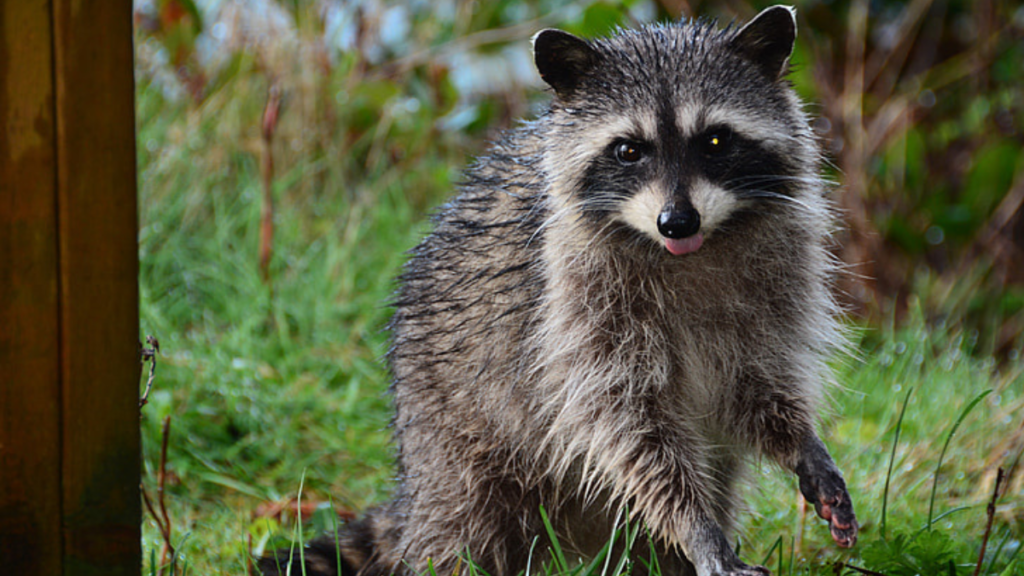Hey everybody, Linda Lou the Blog Dog here! I hope you all enjoyed your summer and Fall, I know I sure did. I’m a bit behind on my blogging, and I honestly should have shared this one with you a few months ago. But better late than never! Today I want to talk about a very serious topic – the Rabies virus.
Rabies is caused by a viral disease that is most commonly spread by a bite from an infected animal. The virus is only spread through saliva, no other bodily fluids. The saliva must enter a wound or come in contact with your mucous membranes, so being licked by a rabid animal won’t cause a direct infection. All warm-blooded mammals are at risk for contracting Rabies. Most cases of domestic animal infections are in dogs, cats, cattle and horses. In wildlife, the most common victims are raccoons, skunks, bats and foxes. Rabies is rarely seen in mice, rats, squirrels or rabbits.
Rabies is a serious health issue in over 150 countries and territories, mainly in Asia and Africa. According to the World Health Organization, dog bites and scratches cause 99% of global Rabies cases in humans, with children between the ages of 5 and 14 years being the most common victims. Yikes. That doesn’t look good for us canines! Fortunately, in the United States we vaccinate our pets against this viral disease, and it is mostly controlled. The most common vector of the disease in the U.S. is from bats. My mom found one in our washing machine a few years back! It had perished in the wash cycle…
The CDC has several tips to keep us four-leggers and humans safe from the Rabies virus. They ask that you be a responsible pet owner and work with your vet to keep pets current on their rabies vaccination. Call your vet immediately if your pet was bitten by a wild or stray animal. Do not touch, feed or otherwise attract wild animals to you or your residence. If you find an injured animal, do not try to nurse it back to health; instead call animal control or a rehab center.
If you are bitten or scratched by a possibly rabid animal, wash the wounds immediately with soap and water and seek medical care in a timely fashion for possible exposure. Your doctor will begin post-exposure prophylaxis, or PEP. If started immediately after exposure, PEP is close to 100% effective at preventing the virus from spreading in the body. Initial symptoms of the Rabies virus in humans include weakness, fever and pain. Neurological symptoms will eventually develop, such as confusion, agitation, depression and hallucinations. Victims may become disoriented, demonstrate extreme emotions such as terror or excitement, demonstrate a fear of water, and eventually experience paralysis and/or seizures. Rabis is a deadly virus, so please take any possible exposures seriously!
My fellow dogs and cats: If you find yourself on the unfortunate end of a scuffle with a possibly rabid animal, please have your human call your vet. You will need a Rabies vaccine booster as soon as possible. We only need one shot, whereas the humans will receive several. Symptoms of the rabies vaccine in pets include aggression, drooling, difficulty swallowing, paralysis and seizures.
World Rabies Day is celebrated on September 28th each year to honor the developer of the Rabies vaccine, Louis Pasteur. I told you, I’m a little late getting this post out. Regardless, let’s all take a moment of appreciation for Mr. Pasteur and his hard work! Even though I don’t like getting vaccines, I am happy to be protected against such an awful disease.
Stay safe!
Linda Lou, the fully vaccinated Blog Dog
Rabies is caused by a viral disease that is most commonly spread by a bite from an infected animal. The virus is only spread through saliva, no other bodily fluids. The saliva must enter a wound or come in contact with your mucous membranes, so being licked by a rabid animal won’t cause a direct infection. All warm-blooded mammals are at risk for contracting Rabies. Most cases of domestic animal infections are in dogs, cats, cattle and horses. In wildlife, the most common victims are raccoons, skunks, bats and foxes. Rabies is rarely seen in mice, rats, squirrels or rabbits.
Rabies is a serious health issue in over 150 countries and territories, mainly in Asia and Africa. According to the World Health Organization, dog bites and scratches cause 99% of global Rabies cases in humans, with children between the ages of 5 and 14 years being the most common victims. Yikes. That doesn’t look good for us canines! Fortunately, in the United States we vaccinate our pets against this viral disease, and it is mostly controlled. The most common vector of the disease in the U.S. is from bats. My mom found one in our washing machine a few years back! It had perished in the wash cycle…
The CDC has several tips to keep us four-leggers and humans safe from the Rabies virus. They ask that you be a responsible pet owner and work with your vet to keep pets current on their rabies vaccination. Call your vet immediately if your pet was bitten by a wild or stray animal. Do not touch, feed or otherwise attract wild animals to you or your residence. If you find an injured animal, do not try to nurse it back to health; instead call animal control or a rehab center.
If you are bitten or scratched by a possibly rabid animal, wash the wounds immediately with soap and water and seek medical care in a timely fashion for possible exposure. Your doctor will begin post-exposure prophylaxis, or PEP. If started immediately after exposure, PEP is close to 100% effective at preventing the virus from spreading in the body. Initial symptoms of the Rabies virus in humans include weakness, fever and pain. Neurological symptoms will eventually develop, such as confusion, agitation, depression and hallucinations. Victims may become disoriented, demonstrate extreme emotions such as terror or excitement, demonstrate a fear of water, and eventually experience paralysis and/or seizures. Rabis is a deadly virus, so please take any possible exposures seriously!
My fellow dogs and cats: If you find yourself on the unfortunate end of a scuffle with a possibly rabid animal, please have your human call your vet. You will need a Rabies vaccine booster as soon as possible. We only need one shot, whereas the humans will receive several. Symptoms of the rabies vaccine in pets include aggression, drooling, difficulty swallowing, paralysis and seizures.
World Rabies Day is celebrated on September 28th each year to honor the developer of the Rabies vaccine, Louis Pasteur. I told you, I’m a little late getting this post out. Regardless, let’s all take a moment of appreciation for Mr. Pasteur and his hard work! Even though I don’t like getting vaccines, I am happy to be protected against such an awful disease.
Stay safe!
Linda Lou, the fully vaccinated Blog Dog






